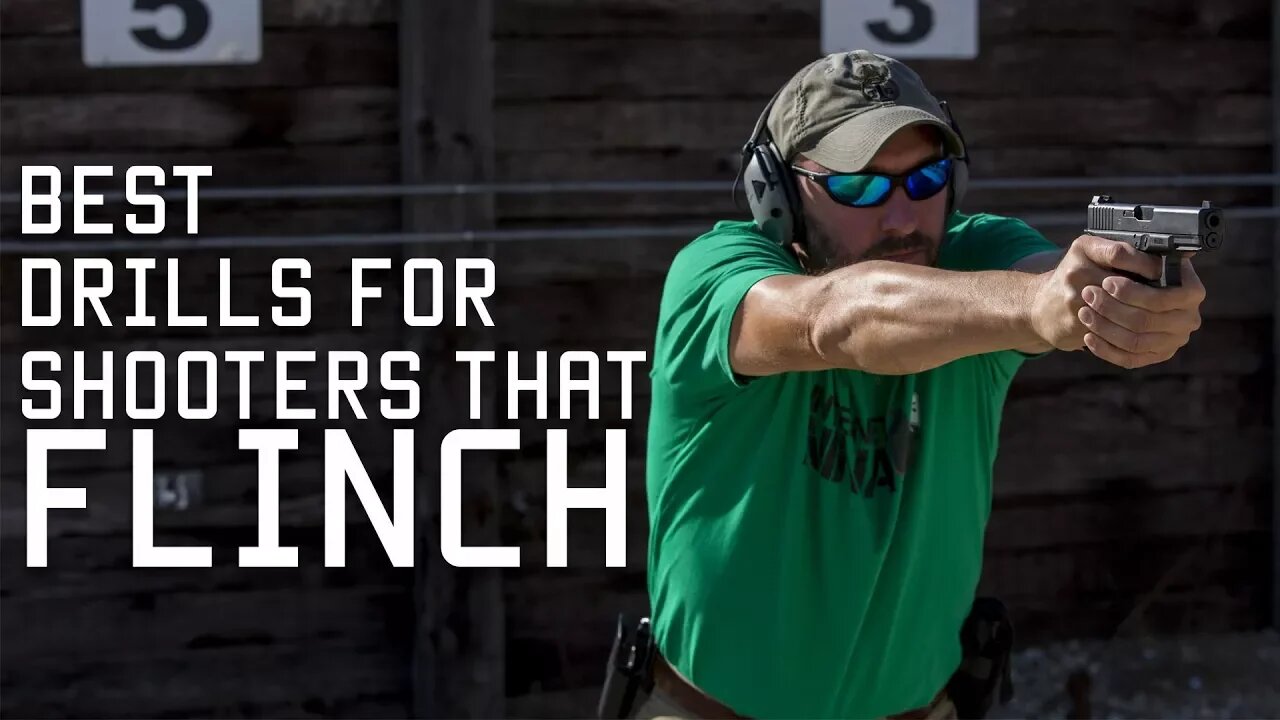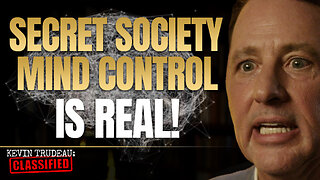Premium Only Content

Shooting Drill to Fix Bad Habits | Flinching
In this video I want to cover a couple simple training drills. First will help you determine if a student has a flinch. The second drill will help you break that flinch.
Why do new shooters flinch? Well, they are scared of the gun. Not so much the recoil in their hands, but rather the overpressure concussion of that shock wave hitting them in the face. For some, maybe Daddy started them off at 10 years old shooting a double-barrel 12 gauge. For others, maybe they had poor hearing protection. Don’t laugh at them, because I can put you behind a Barrett .50cal (with the muzzle brake removed) and after a dozen rounds, your body wont be wanting you to pull the trigger either. Whatever the cause of the flinch; first you have to identify it, then you have to eliminate it.
Most shooters don’t flinch when they are just dry-firing, because their subconscious mind knows that they aren’t going to get slapped in the face by a loud shock wave. Also, you can’t really see a flinch while someone is shooting live ammo. That’s where Dummy Rounds come in. They work great for surprising that shooter. They think they are going to get popped. Then, when they hit the dummy round, that you hid in their magazine, they jerk the living hell out of the firearm.
Once you have identified that the shooter has a flinch; try to take away as much of the cause as possible. Use double ear pro. Use good wrap around glasses or even goggles. Use a pistol with a smaller caliber or lighter loads. A 44 magnum is not the best pistol to start out your 12 year old daughter on.
One of my favorite drills for fixing a Flinch, is called “Alternating Ball & Dummy.” Every other round is a dummy round and the shooter knows it. I even remind them. My thought process is that, even though they flinch on every live round, they are not flinching on the dummy rounds. Their subconscious mind is at least seeing what “correct” looks like 50% of the time (when they are shooting the dummy rounds). After a while, they relax, and the subconscious mind begins to flow with the line that they know is correct. It works. It might take a few magazines, but it does work.
So, the next time you are out at the range with a new shooter that is missing terribly; instead of just bashing them, give them some constructive criticism. Help them identify if they have a flinch. They might not even know it. Then, if they do, try my “Alternating Ball & Dummy” Drill to help them break the habit.
Thanks for watching. Strength & Honor, TR.
-
 LIVE
LIVE
JuicyJohns
2 hours ago $2.89 earned🟢#1 REBIRTH PLAYER 10.2+ KD🟢
94 watching -
 3:18:50
3:18:50
Times Now World
4 hours agoLIVE: NATO Chief Demands 5% of GDP for War Chest! Mark’s Bold Plan for Allies at IISS Prague Defence
20.2K1 -
 15:54
15:54
IsaacButterfield
5 hours ago $0.36 earnedAustralians BANNED from Taking Photos at Uluru
4.35K8 -
 LIVE
LIVE
The Mike Schwartz Show
2 hours agoTHE MIKE SCHWARTZ SHOW with DR. MICHAEL J SCHWARTZ 09-04-2025
4,045 watching -
 1:16:35
1:16:35
JULIE GREEN MINISTRIES
4 hours agoGOVERNMENTS AROUND THE WORLD ARE ABOUT TO COLLAPSE
81K140 -
 1:54:16
1:54:16
Welcome to the Rebellion Podcast
14 hours ago $1.88 earnedDon3po is Live - WTTR Podcast Live 9/4
16.7K2 -
 13:43
13:43
The Kevin Trudeau Show Limitless
1 day agoClassified File 3 | Kevin Trudeau EXPOSES Secret Society Brainwave Training
65.2K10 -
 1:59:20
1:59:20
The Chris Salcedo Show
14 hours ago $3.29 earnedAmericans Are Tired Of Leftists & Fake-GOP Who Cater To Them
22.3K -
 1:12:23
1:12:23
Game On!
21 hours ago $1.58 earnedFootball IS BACK! Cowboys vs Eagles Opening Night Kickoff!
19.1K1 -
 4:02:51
4:02:51
The Bubba Army
1 day ago#1 Documentary IN THE WORLD! - Bubba the Love Sponge® Show | 9/04/25
32.6K4